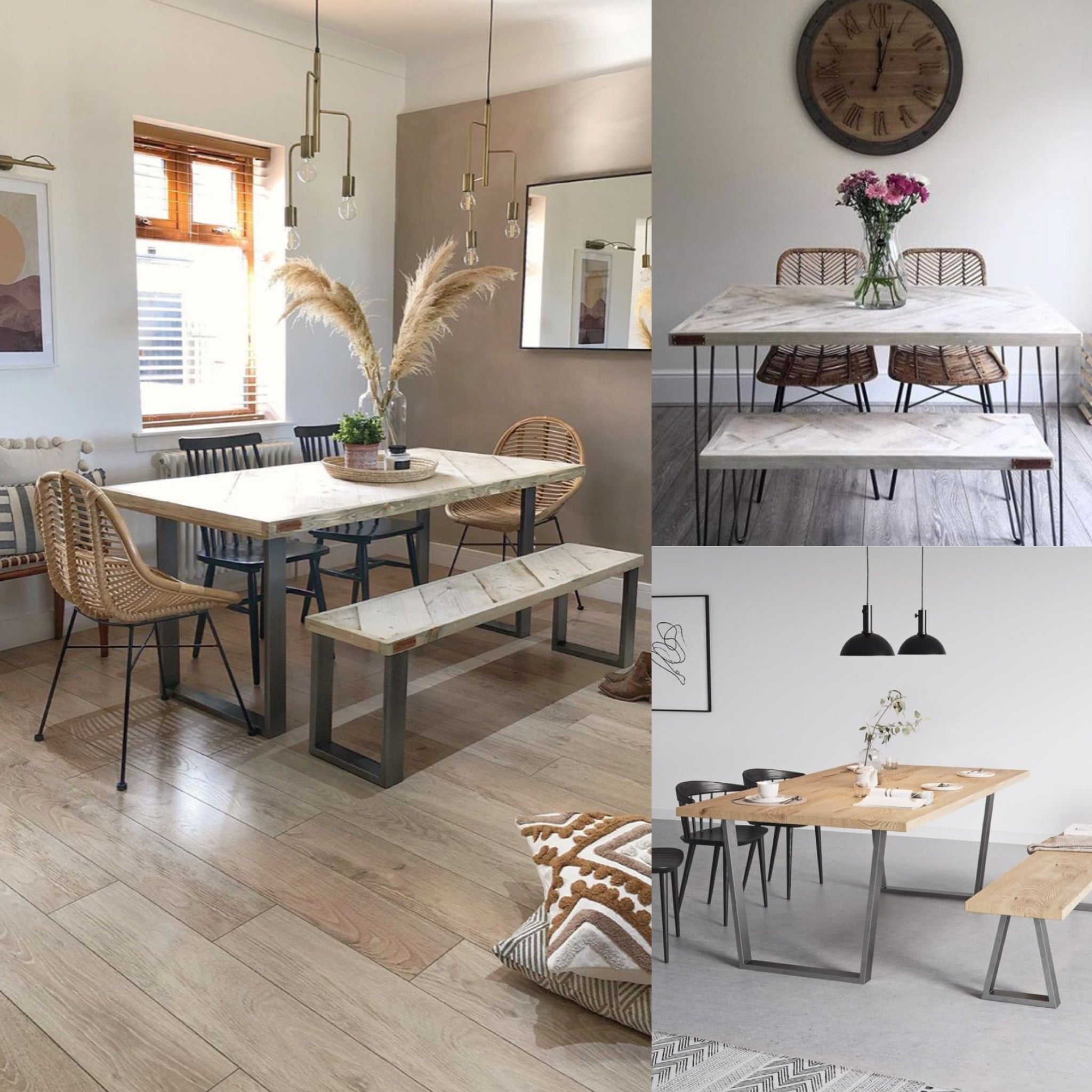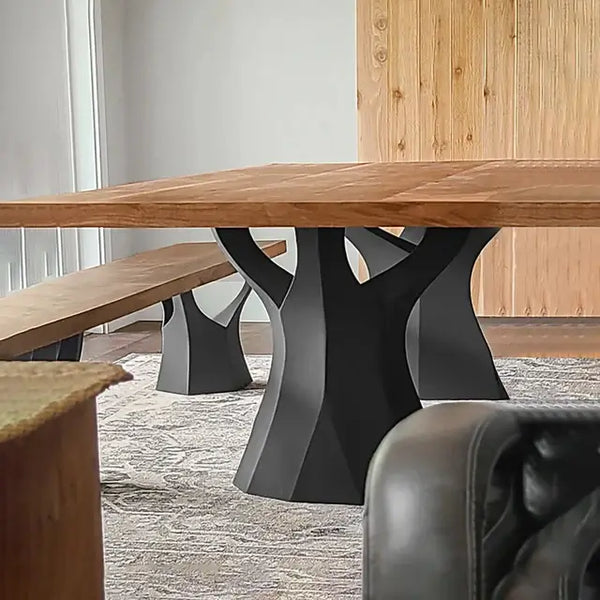How to Maintain and Care for Your Dining Room Table Legs
How to Maintain and Care for Your Dining Room Table Legs
Blog Article
Expert Tips for Setting Up Dining-room Table Legs for Optimum Security
When it comes to mounting dining space table legs, achieving maximum security is paramount for both capability and appearances. What particular methods can boost stability even additionally?
Pick the Right Legs
When selecting the suitable legs for your dining-room table, it is necessary to consider both functionality and appearances. The legs you choose will significantly influence the overall style and stability of the table. Evaluate the table's planned usage; if you anticipate constant celebrations, tougher legs, such as those made from strong timber or steel, might be extra ideal, as they supply increased resilience and support.
Next, think about the height and design of the legs in connection with the table top. Common eating tables normally vary from 28 to 30 inches in height, so ensure the legs align with this standard for convenience. The design of the legs must match the design of the tabletop-- whether it be modern-day, rustic, or standard. As an example, conical legs can add a contemporary touch, while transformed legs could share a much more traditional aesthetic.

Select Appropriate Hardware
Exactly how can the appropriate hardware improve the security and longevity of your dining-room table? The choice of appropriate hardware is vital to guaranteeing that the legs of your table are securely affixed and able to withstand normal use. High-grade screws, bolts, and brackets give the necessary strength to support the weight of the table, along with any additional loads put upon it throughout dishes or gatherings.
When selecting screws, go with those made from sturdy materials such as stainless steel or brass, which resist rust and preserve stability with time. The size of the screws is equally essential; they must pass through deeply into the table's structure without jeopardizing honesty. For bolted links, think about using lock washing machines to avoid loosening up as a result of vibration or activity.
Additionally, utilizing edge brackets can add extra assistance, particularly for larger tables or those with heavier tops. These braces disperse weight evenly and assist maintain the table's form. Making certain that the equipment you select is appropriate for the details products of your table will further boost its total stability and longevity, allowing you to appreciate your eating experience for many years to find.
Ensure Proper Alignment
Appropriate placement of dining-room table legs is necessary for both aesthetic allure and practical stability. Misaligned legs can bring about an unequal table top, which may not just be aesthetically unattractive yet likewise compromise the table's functionality. To achieve ideal alignment, start by measuring the range from the table's corners to the leg add-on points. This makes certain that each leg is positioned equidistant from the sides, creating a well balanced look.
Use a degree throughout installment to validate that each leg is vertical to the table top. It is suggested to note the wanted leg placements on the underside of the table with a pencil or masking tape before securing them.
Furthermore, confirm the positioning after the preliminary screws are tightened up, as modifications might be essential prior to completely securing the equipment. By focusing on correct placement, you not just enhance the table's total layout but likewise guarantee that it remains functional and steady for several years ahead.

Consider Weight Distribution
After making sure correct alignment of the dining room table legs, it is essential to consider weight distribution to boost stability and functionality. dining room table legs. Proper weight distribution is critical in stopping ensuring and tottering that the table can sustain its designated lots without threat of tipping or breaking down
When positioning the legs, guarantee they are put at equivalent ranges from the center of the table to uniformly distribute the weight throughout the framework. Consider the weight of the table top and any type of items that will regularly hinge on it, such as decorative items or tabletop appliances. Tables with much heavier surface areas must ideally have legs located recommended you read closer to the corners, as this optimizes the base of support and decreases the risk of instability.
In addition, if the table is meant for usage in a high-traffic area, take into consideration using much heavier materials for the legs or including stabilizing aspects, such as cross-bracing or a reduced shelf - dining room table legs. These modifications can help preserve balance and prevent moving throughout use. Eventually, a well-considered weight distribution technique will substantially boost the table's overall performance, guaranteeing it remains a useful and attractive focal point for your eating room
Test Security Prior To Usage
Evaluating the stability of the dining area table before usage is an important step that ought to not be neglected. If the table shows instability, identify the legs or joints that may call for modification.
Next, check that all bolts and screws are tightened up appropriately. Loosened connections can result in instability and potential damages over time. If necessary, make use of timber glue on joints to boost security, making certain to enable sufficient drying out time.

Final Thought
Finally, the installation of dining-room table legs calls for careful consideration of materials, alignment, weight, and hardware distribution to accomplish optimum stability. By selecting tough legs and high-grade fasteners, guaranteeing exact blog placement, and distributing weight evenly, the architectural stability of the table can be dramatically you can try here enhanced. Conducting a stability examination prior to regular use additionally makes certain that the table will hold up against day-to-day stress, thereby providing a dependable and secure eating experience.
When it comes to mounting dining room table legs, attaining maximum stability is vital for both functionality and aesthetics. The legs you choose will substantially affect the general design and stability of the table (dining room table legs). Basic dining tables generally range from 28 to 30 inches in height, so ensure the legs align with this criterion for convenience.Appropriate positioning of dining room table legs is important for both aesthetic allure and useful security.In final thought, the setup of dining room table legs requires careful factor to consider of products, placement, hardware, and weight distribution to accomplish optimum stability
Report this page